10 acceleration tips for old computers
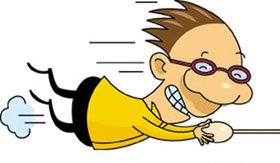 If your computer is slow, refer to the 10 tips introduced in the article to speed up any old computer.
If your computer is slow, refer to the 10 tips introduced in the article to speed up any old computer.With a computer that has been used for more than a year, you will surely feel it much slower than before. There are many reasons for this problem, which may stem from unnecessary programs that consume system memory to spyware and malignant viruses. And for whatever reason, the end result is the same in that it makes your computer uncomfortably slow.
In this article, however, we will introduce some non-technical tips that you can take to speed up a slow PC. The tasks listed in the lesson are presented in order from easiest to most difficult.
1. Restart regularly
This is the simplest way to speed up a computer when it starts to slow down. Sometimes opening and closing multiple programs on your computer may cause part of the system memory to be freed for use in the following tasks. The less memory you have, the slower your system will operate, which is an obvious fact.
The only way to free up this lost system memory is to shut down and restart the computer - this is an operation that you should do at least once a day. Let your computer run continuously all week, you will realize how slow it is!
This tip is really useful if you are running Windows XP, the operating system is known for this type of memory loss. Only Windows Vista errors can be fixed gradually, but it is still useful to restart the computer in a certain cycle.
2. Remove Spyware and Virus
When computers naturally run abnormally slow, the first thing you need to look for is a virus or spyware program - especially if there are teenagers in the house. The reason is that spyware and viruses can attack all aspects of your system, slowing down the system but not completely freezing.
One of the most vulnerable sites is file-sharing sites, teenagers who visit these sites and download music files, movies and accidentally pull malware onto their computers. However, not all download sites, there are sites that protect users securely like iTunes, Amazon, etc., only dangerous sites allow you to download invalid files.
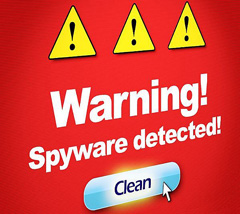 For these two different types of malware, the virus will be the most dangerous, but spyware is the most popular. This is because you are more susceptible to spyware infections than viruses. While spyware does not cause technical damage to your system like viruses, it can and often eat up system resources and slow down your computer.
For these two different types of malware, the virus will be the most dangerous, but spyware is the most popular. This is because you are more susceptible to spyware infections than viruses. While spyware does not cause technical damage to your system like viruses, it can and often eat up system resources and slow down your computer.
To clean the system to avoid attacks from viruses, you need to run an antivirus program. Similarly, you also need an anti-spyware program to get rid of spyware from your system.
Remember that prevention is better than cure, which means that you need to avoid accessing malicious sharing sites, or should not open attachments in unknown emails or perform some protective actions generally for computers.
Avoiding malware, you will maintain the speed of your computer.
3. Remove the automatic download program
The more programs you run (or many documents open), the slower your computer will run. The reason for that is that all programs or documents (and other operating system instructions) are stored in the system memory.
Too many programs in a memory insufficient capacity will reduce the performance of the system.
For this reason, you need to exclude any program that loads automatically without actually using it. This method frees the memory space for the system to serve the programs you are running.
The problem is that there are a lot of programs running on your computer, and you don't know what programs you're currently using and don't know how to control them. Here you have to explain so that you understand more about autoloading programs without your permission, which are programs that launch whenever you turn on your computer and launch Windows. When loaded, these programs will be in the system memory - consuming a valuable amount of memory space and contributing to slowing down the performance of the system.
Most of these programs and startups are needed at some point, just like a precaution that you've decided to use them. On any system you can find utilities under all pre-loaded configurations or sizes on the system memory - utilities for checking and upgrading the program, helping to detect and download images from attached drives and devices, preloading a number of bits for larger programs (help these programs launch faster if you want to use them), run sidebar, toolbar and widget, etc. You can also see instant messaging programs preloaded into memory, along with utilities to manage the various activities of the system.
Do you need all these programs and utilities to run in the background every time you start your computer? Obviously not. The more programs and utilities as mentioned above, the less available memory to provide for your other essential programs. That is a fact.
This is an inefficient use of system resources and is one of the main causes of computer performance degradation.
Because there are many locations on the computer where these programs are launched, there are many ways to make these autoloading programs not automatically loaded. The most effective method is to use the System Configuration utility of Windows, or Msconfig . This utility will take you through a series of steps to disable system components that run on startup until you can isolate the component that caused your problem; It can also be used to stop loading programs during system startup.
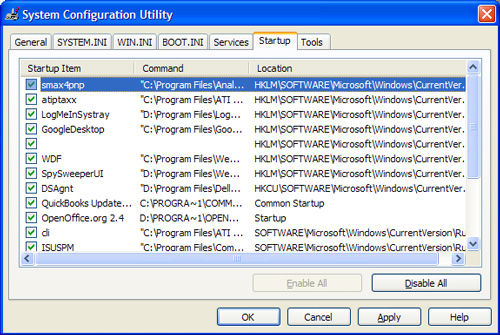
To open the System Configuration utility, select Start , Accessories , Run ; When the Run dialog box appears, enter msconfig and click OK . When the System Configuration utility window appears, select the Startup tab, which lists all the programs and the loading process when Windows launches, along with their location (Registry key or Startup folder). .
To prevent certain programs or processes from loading in startup mode, you can simply deselect the item in this list. When you click OK , your changes will apply after restarting Windows.
4. Delete old files from the drive
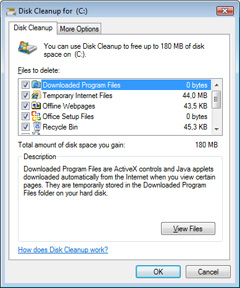 Not only does the lack of memory lead to a slowing down of the computer. If there is not enough free space on the hard drive, your computer may also be slow. This is because your computer will use the free space on the hard disk as a virtual memory to support the system's random access memory, so there will not be enough virtual memory for the chapters. Your submission to be able to maximize performance.
Not only does the lack of memory lead to a slowing down of the computer. If there is not enough free space on the hard drive, your computer may also be slow. This is because your computer will use the free space on the hard disk as a virtual memory to support the system's random access memory, so there will not be enough virtual memory for the chapters. Your submission to be able to maximize performance.
For this reason, you should periodically remove unnecessary files to free up hard disk space. You can perform this operation automatically with the Windows Disk Cleanup utility; Just click on the Start menu and select All Programs, Accessories, System Tools, Disk Cleanup .
The more files you delete, the more free your disk space becomes available - then your computer will work faster.
5. Remove the unused programs
Along with the above measures, removing unused programs from your system also frees up a lot of hard disk space. You can use the Add / Remove Programs utility from Windows (look in Control Panel ) to cancel installing old programs.
This utility will remove all traces of an old program - even remove it from the Windows Start menu. If you do not use a program within 6 months or more, it is the candidate for performing your uninstallation.
6. Perform defragmenting hard drive
This is another way that your hard drive may slow down the system - by creating lots of debris over time.
Adding files is like taking parts from a jigsaw puzzle and arranging them into different boxes, along with parts from other games; The more parts are dispersed, the longer it will take to accomplish this task. You complete your mission and overcome the problem when arranging all parts of the game into the correct boxes.
A fragmented hard disk is like a messy jigsaw puzzle. Parts of the game are parts of the program and document files are fragmented across the entire hard disk. If the components of the program are more widely distributed, the time to read them from the hard drive will take longer.
However, your hard drive may be fragmented every time you run a program or open or close a file, it will slow your system over time. For that reason, you should defragment at least once a month.
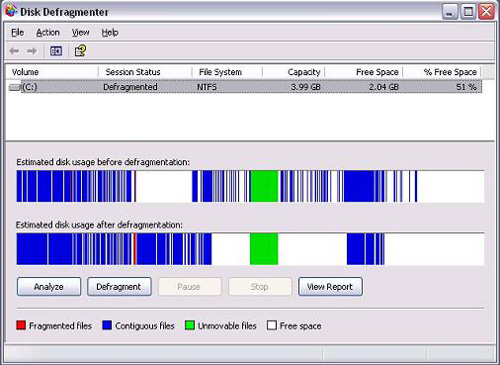
You can use Windows' Disk Defragmenter utility to fix this problem, just click on the Start menu and select Programs , Accessories , System Tools , Disk Defragmenter . Alternatively, you can use third-party defragment utilities such as Diskeeper , which is a much-appreciated program that is more powerful than the Windows tool.
A defragmented hard drive will run much faster than a fragmented hard drive.
7. Add more memory with ReadyBoost
Many slow computer phenomena may be the cause of a lack of system memory. Usually you still solve this problem by adding physical memory, which can make it difficult for people who are not technically proficient.
However, if your computer is running Windows Vista, you can add more memory without opening the case . All you need to do is plug in a cheap USB drive or flash memory card.
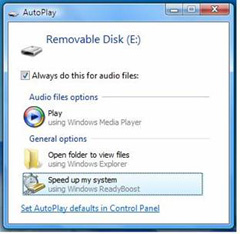 Windows Vista operating system has a memory enhancement technology called ReadyBoost . With ReadyBoost , you can use a USB device to temporarily increase the amount of RAM on your personal computer. Plug one of these devices into the appropriate slot on your computer, your system memory will automatically increase - and the system's performance will also automatically improve.
Windows Vista operating system has a memory enhancement technology called ReadyBoost . With ReadyBoost , you can use a USB device to temporarily increase the amount of RAM on your personal computer. Plug one of these devices into the appropriate slot on your computer, your system memory will automatically increase - and the system's performance will also automatically improve.
When plugging an external memory device into the Vista computer, you will be prompted how you want to use the device. In this case, select Speed Up My System , then your computer will automatically access the available memory space on the device.
Note: ReadyBoost technology is only available in Windows Vista and Windows 7; There is no similar technology in Windows XP and older operating systems.
8. Clean up your web browser
Sometimes the cause of your computer slowing down comes from the web browser. In this case, the fastest way to speed up web browsing is to upgrade the broadband connection because broadband connections can slow down over time.
This is because your web browser will store temporary copies of every website you visit. This feature is called a cache , and it will consume some space on your hard disk. While the cache is designed to speed up web browsing (your browser only needs to access the internal cache when you want to revisit a page recently), but when the cache is too large it may slow down your browser. significant.
You will see, over time, your browser will save more and more pages in the cache file - and these pages are not deleted automatically. Therefore, the more pages you access, the more full the cache on your hard drive.
The cache supports the web browser and the browser will categorize the entire cache every time you load a page and search for the correct version of the page saved for you. Therefore, the larger the cache, the more time it takes to reference.
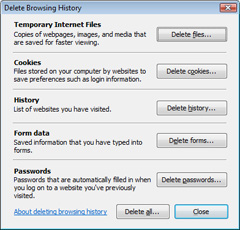 The simple solution to this slowdown is to clear the cache . In essence, what you do is delete the cache file; This will empty the cache , free up valuable disk space and make your browser easier to find previously cached pages.
The simple solution to this slowdown is to clear the cache . In essence, what you do is delete the cache file; This will empty the cache , free up valuable disk space and make your browser easier to find previously cached pages.
Fortunately, the way to clear cache is quite easy. For example in Internet Explorer, you can do so by clicking the Tools button, then selecting Delete Browsing History ; When the Delete Browsing History dialog box appears, click the Delete Files button.
This will delete the temporary cache file on your computer and will increase the performance for the browser. Note, however, that it is necessary to perform this action on a regular basis, there is no way to configure Internet Explorer so that the browser can automatically clear the cache.
9. Use a DNS Server to browse the web
Sometimes the fastest broadband connection still feels slow if it takes a lot of time to ' download ' every website you want to visit. The problem is due to one thing called Domain Name System (DNS), the slowdown in your ISP's DNS server - and completely fixable.
Every website on the Internet is hosted on a web server (called a web server). To distinguish between millions of such servers, each server must have its unique address, which is called an IP address, such as 192.111.222.333 .
Obviously, you don't need to type this address into your web browser when you want to visit a website. What you need to type here is the URL or website address; eg: www.websiteaddress.com . The URL is the alias for the site's true address.
What the DNS server does is associate the site's easy-to-remember URL with its hard-to-remember IP address. When you connect to the Internet through your ISP, your URL requests will be sent to your ISP's DNS server, to look up the actual address from the URL you provide.
It was a simple process until the ISP's DNS server began to slow down. When this happens, the time spent searching for IP addresses for the URL you enter takes longer - and leads to slowing down your web browsing.
However, you can fix this problem by directing the URL requests to another DNS server. To do that, some sites, such as BrowseSafe.com and OpenDNS.com, offer alternative DNS services, allowing for faster lookups and thus faster web browsing. On your side, you need to follow the instructions on these sites to reconfigure Windows Network Connections to use alternate DNS servers to speed up browsing.
10. Clean the Registry
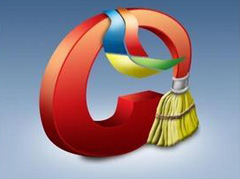 The Windows registry is a huge database that holds configuration information for Windows and all the programs you have installed on your hard drive. Over time, all the different programs you install and the settings you need to create have a lot of entries in the Registry - that makes the Registry bloated.
The Windows registry is a huge database that holds configuration information for Windows and all the programs you have installed on your hard drive. Over time, all the different programs you install and the settings you need to create have a lot of entries in the Registry - that makes the Registry bloated.
The difficulty is that deleting a program from a hard drive does not always mean deleting the program's settings from the Registry. This makes the Registry increasingly bulge with lots of unnecessary entries. And the larger the Registry is, the longer the file size and the number of entries, the longer it will take for Windows to load it when it starts up - which is what caused your slowdown.
Fixing the problem is just deleting all unnecessary Registry entries. Although it is easy to say, the implementation is not simple at all. The problem here is, do you know which entries are necessary and which entries? Plus is it whether you want to do all that work using Registry Editor?
However, a number of third parties have recognized this problem and have come up with their own solutions, in the form of Registry removal utilities. These programs will automatically clean up the cumbersome part of your Registry, deleting invalid entries. The most popular of the Registry cleaner kits is CCleaner, RegSeeker and WinCleaner.
How does a Registry delete program affect performance? This depends on how well it detects the Registry. If a Registry eraser only finds fewer entries to delete (there are still valid entries left) then the performance impact is minimal.
However, if you have a large number of useless entries, the Registry eraser will have a higher impact on the performance of the system. And so you will see its changes in the speed of the system.
You should read it
- 50 Registry tricks to help you become a true Windows 7 / Vista 'hacker' (Part 1)
- 12 useful Registry tips to optimize the Windows 10 experience
- Basic computer technology
- Use the .reg file to configure the Registry in WinXP
- Learn about the Windows Registry - Part I
- How to Get Into a Computer Registry
- How to use Wise Registry Cleaner to clean and fix registry errors
- Amigabit discount discount computer care software
May be interested
- 3 'tips' to speed up Windows 7
 after a period of use, the operating system will become sluggish and sometimes 'choke' again. windows 7 is no exception. this article will guide you to a few small 'tips' to be able to maintain and manage windows 7 yourself.
after a period of use, the operating system will become sluggish and sometimes 'choke' again. windows 7 is no exception. this article will guide you to a few small 'tips' to be able to maintain and manage windows 7 yourself. - To speed up Chrome browser, apply these tricks
 like other browsers, after a long time of use, the chrome browser will become more and more slow because there must be everything, utilities, plugins, even viruses .... with the speed of day such a slowdown, during use sometimes makes users feel uncomfortable and frustrating.
like other browsers, after a long time of use, the chrome browser will become more and more slow because there must be everything, utilities, plugins, even viruses .... with the speed of day such a slowdown, during use sometimes makes users feel uncomfortable and frustrating. - How does Google speed up the Internet?
 google has developed the tcp / ip acceleration algorithm, the main data transfer protocol on the internet, up to 14%.
google has developed the tcp / ip acceleration algorithm, the main data transfer protocol on the internet, up to 14%. - 11 Firefox acceleration Quantum less than 10 minutes
 moving to quantum also means that many reliable tricks to speed up your old browser are no longer effective. the good news is that there are some new tricks to replace them, see firefox acceleration tips quantum below.
moving to quantum also means that many reliable tricks to speed up your old browser are no longer effective. the good news is that there are some new tricks to replace them, see firefox acceleration tips quantum below. - Amigabit discount discount computer care software
 contributing to bustling the atmosphere for the summer 2013 discount season, many software companies have launched attractive discount and promotion programs for all users of computers and mobile devices.
contributing to bustling the atmosphere for the summer 2013 discount season, many software companies have launched attractive discount and promotion programs for all users of computers and mobile devices. - Introducing the acceleration feature of Internet Explorer 8
 the following article will introduce you to ie8's accelerators feature, and help you make the most of it.
the following article will introduce you to ie8's accelerators feature, and help you make the most of it. - Tips to speed up fingerprint unlocking and unlock faces on iPhone
 you can speed up fingerprint unlocking or unlock faces on iphone with this simple tip
you can speed up fingerprint unlocking or unlock faces on iphone with this simple tip - Network acceleration on Android with Internet Speed Master
 according to the experience of some android users, their device often suffers from slow internet speed in connection technologies like wi-fi, 3g or 4g.
according to the experience of some android users, their device often suffers from slow internet speed in connection technologies like wi-fi, 3g or 4g. - Tips to help your computer use electricity more efficiently
 to be fair, computers are not a power-consuming device compared to other household devices. however, they can also make you pay a heavy price if used in a bluff.
to be fair, computers are not a power-consuming device compared to other household devices. however, they can also make you pay a heavy price if used in a bluff. - Tips to save time and avoid risks when working with computers
 when you need to work you will never want your computer to run like a cow, it takes a lot of time just to start up, set up tasks ... cnet's simple tips will help you fix this. .
when you need to work you will never want your computer to run like a cow, it takes a lot of time just to start up, set up tasks ... cnet's simple tips will help you fix this. .










 Some simple tricks to speed up Windows 7
Some simple tricks to speed up Windows 7 Quickly detect bad sectors for hard drives
Quickly detect bad sectors for hard drives